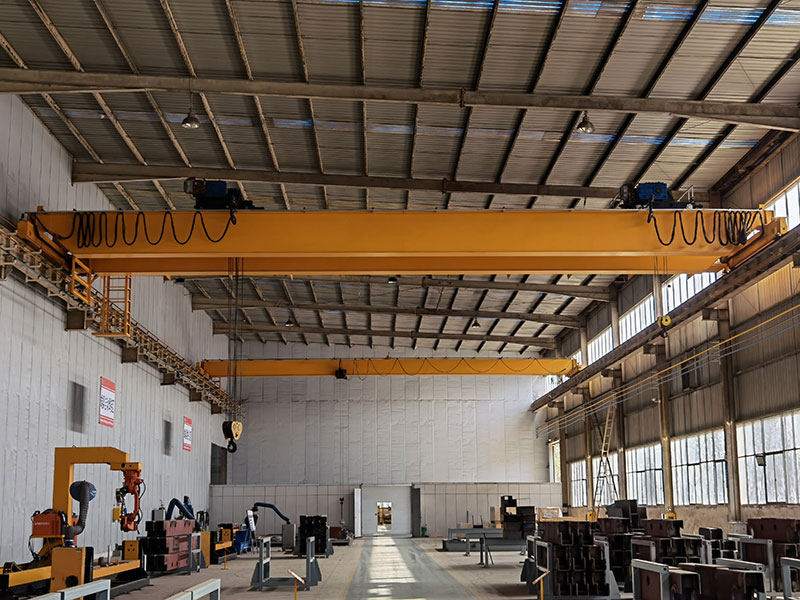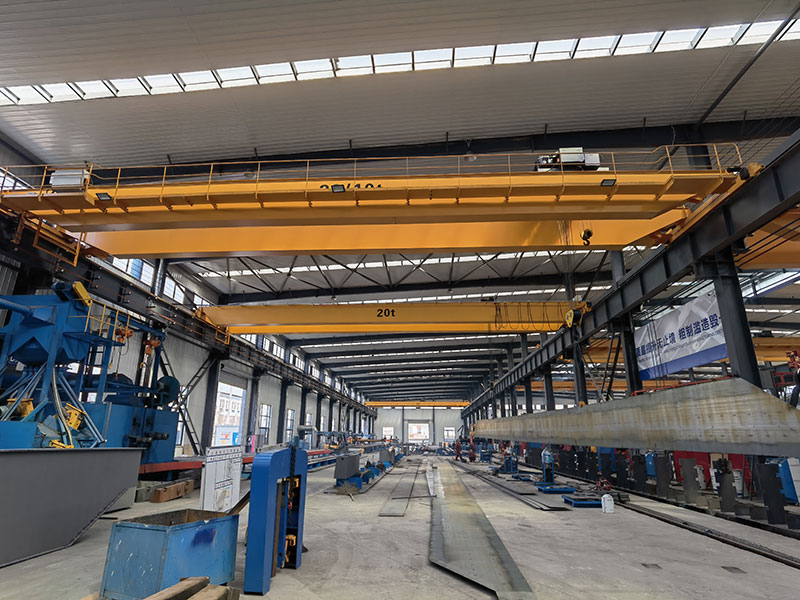Operating a 30 ton overhead crane requires precision, skill, and a thorough understanding of safety protocols. Overhead cranes are powerful pieces of industrial equipment used for lifting and moving heavy loads within a facility. In this comprehensive guide, we will delve into the step-by-step process of operating a 30 ton overhead crane, emphasizing safety, proper procedures, and best practices.

Pre-Operational Checks
Before operating the overhead crane, it is crucial to conduct thorough pre-operational checks to ensure that the heavy duty crane is in optimal condition. This includes inspecting the crane’s structure, hoisting mechanisms, controls, and safety devices. Check for any signs of wear, damage, or malfunction. Verify that all safety features, such as limit switches and emergency stop buttons, are functional. It is recommended to perform these checks regularly as part of routine maintenance.
Personal Protective Equipment (PPE)
Wearing appropriate personal protective equipment is essential for crane operators. This typically includes a hard hat, safety glasses, gloves, and steel-toed boots. The operator should also wear any additional safety gear required by the specific workplace or industry standards. Ensuring the use of PPE contributes significantly to the overall safety of crane operations.
Familiarization with Controls
Before lifting any loads, the operator must be fully familiar with the crane’s controls. The control panel usually consists of buttons or levers for hoisting, lowering, trolley movement, and bridge movement. Understanding the functions of each control is critical to maintaining control and precision during crane operation. Training and certification programs are often required to ensure operators are well-versed in crane controls.

Load Inspection and Rigging
Careful inspection of the load is a vital step in the operation of a 30 ton overhead crane. Verify the weight of the load to ensure it does not exceed the crane’s capacity. Additionally, inspect the load for any defects, loose materials, or uneven weight distribution. Proper rigging is crucial to prevent accidents and ensure the stability of the load during lifting and movement. Check that the slings, hooks, and other rigging equipment are in good condition and properly secured.
Positioning the Crane
Position the crane in a way that provides optimal visibility for the operator and allows for safe load movement. Ensure that the crane is on level ground and that the wheels or tracks are secure. Proper positioning is essential for maintaining stability and avoiding accidents during lifting and transportation.
Lifting Operations
When lifting a load, the operator should follow a systematic procedure. Begin by lifting the load slightly to confirm that the rigging is secure and the load is balanced. Use smooth and controlled movements to avoid sudden jerks or swings. Lift the load to the desired height, taking into account any overhead obstacles. Utilize the crane’s features, such as limit switches, to prevent overloading or exceeding height limits.
Trolley and Bridge Movement
In addition to vertical movement, overhead cranes can move horizontally along the bridge and trolley. When moving the trolley and bridge, the operator should proceed slowly and carefully. Avoid abrupt starts and stops to prevent load swinging. Be aware of the surroundings and communicate with spotters or other personnel if necessary. Utilize the brakes and control features to maintain precise control over the crane’s movements.
Communication
Clear and effective communication is crucial during crane operations. Establish a communication system between the crane operator and ground personnel or spotters. Use standardized hand signals or, if possible, two-way radios for communication. This ensures that everyone involved in the lifting operation is aware of the tasks being performed and can respond to any unexpected situations promptly.
Emergency Procedures
Operators must be well-versed in emergency procedures to handle unexpected situations. This includes knowledge of emergency stop procedures, equipment shutdown protocols, and evacuation plans. Regular drills and training exercises can help operators and other personnel respond effectively to emergencies, minimizing the risk of injuries or damage.
Post-Operational Checks
After completing the lifting operation, conduct post-operational checks to assess the crane’s condition. Inspect the equipment for any signs of wear, damage, or malfunctions that may have occurred during the operation. Address any issues promptly and report them to the maintenance team if necessary. Regular maintenance and timely repairs contribute to the longevity and efficiency of the overhead crane.
Documentation and Record Keeping
Maintaining accurate documentation is an integral part of safe crane operation. Keep records of pre-operational checks, maintenance activities, and any incidents or near misses. Documentation helps track the crane’s performance over time and provides valuable insights for preventive maintenance and improvements in safety protocols.
Ongoing Training and Certification
Continuous training and certification are essential for crane operators to stay updated on the latest safety standards, regulations, and operational techniques. Periodic refresher courses and assessments ensure that operators maintain their skills and knowledge, contributing to a safer working environment. Get more information about it from a reliable crane manufacturer.
In conclusion, operating a 30 ton overhead crane demands a combination of technical expertise, safety consciousness, and effective communication. Adhering to proper procedures, conducting regular equipment checks, and prioritizing safety at every step are paramount. By following these guidelines, operators can contribute to a safer and more efficient workplace, minimizing risks and ensuring the successful completion of lifting operations.